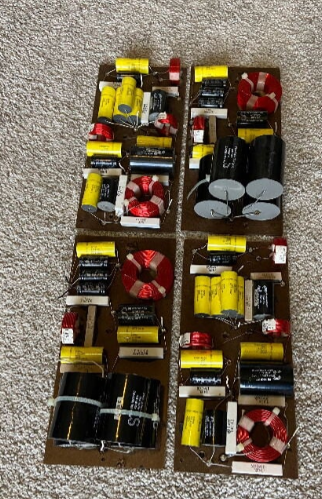In my view, an efficient loudspeaker is a resistive-friendly design, one that keeps its impedance flat and above 5–6 ohms across most of the frequency range, is often high-sensitivity (95 dB+), and avoids complex crossovers that introduce phase rotation. Such designs behave much closer to a purely resistive load and are therefore highly SET-friendly.
An example is the Sigma Acoustics MAAT, which features physically time-aligned drivers and a first-order crossover (time & phase aligned). Its designer drives it with a 20w 300B amp. Another example is a full-range speaker without a crossover, such as the Grandinote Mach, which can be easily driven with 300B or 2A3 SETs.
By this definition, the Goebel Noblesse cannot be placed in that league, as it behaves more like a reactive-load loudspeaker, similar to Wilson or Magico. However, it generally requires less current (can be driven by 150w amps such as Robert Koda) compared to the Wilson XVX, which demands high-current amps in the 300W+ range (such as CH, darTZeel, or D’Agostino).
Goebel, like other marketing driven brands such as Magico, Wilson, TAD, Kharma, Stenheim.. uses a complex crossover (3rd order). Unfortunately, many loudspeaker manufacturers, instead of first matching their drivers physically and acoustically to simplify the crossover (as done by Vandersteen, Sigma Acoustics), take the easier and cheaper route, and forcefully match the drivers using a complex crossovers to cover up design flaws. If you look at Gobel, you'll see that the drivers are not time-aligned, and this flaw alone makes the crossover more complicated. to compensate for the lack of physical time alignment of the drivers, they shift the burden onto the crossover and employ special filters such as all-pass filter to mask the phase delay issue. Naturally, this results in a more complex crossover, introduces additional filters and phase shifts, diminishes musicality, and ultimately makes the speaker harder to drive.
















